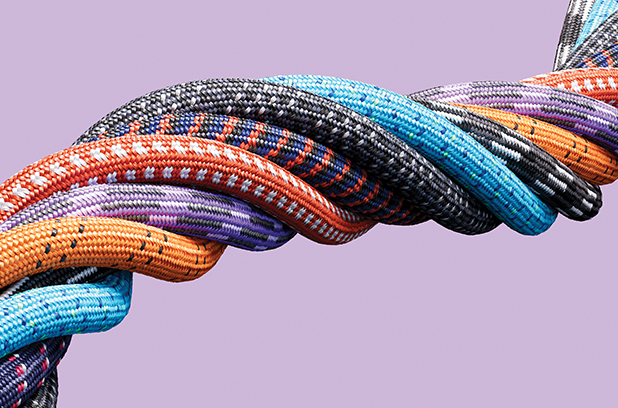The Power of Differences in Learning and Innovation

Managing and making the most of differences and diversity offer opportunity for teamwork and collaboration in 2025 and beyond. If you are willing to make differences work, you can start to build powerful, healthy, creative and successful partnerships.
Diversity comes in many shapes and forms, including different personalities, values, cultures, opinions and experience. If we choose to think of difference as a creative force — an opportunity for learning and better answers — instead of a source of conflict, we can make the most of the different perspectives they bring.
Conflict is natural. It’s simply a difference of perspective or opinion. Conflicting opinions can be the source of healthy debates, great innovation and needed change, leading to better results. Personal differences, conflicting goals and competitive behaviors are some of the reasons why conflict and tension occur.
In that conflict and tension, there’s an inherent power that can give a team, organization or business relationship the boost that it needs to progress, change and become more effective. If everyone has the same opinion, everything remains the same. In a fast-changing world, that results in disaster and will leave you behind organizations that embrace their differences. Continuous innovation is an absolute must for survival.
If you’re serious about working well with business partners, clients, employees or any other stakeholders who are different than you, use these proven solutions.
There’s No Need to ‘Be Right’
Understand that your solution might not be the right or only one. The first step to managing different opinions is to welcome them. When people have different opinions, see it as a good thing. Think about what you can learn from all those different views.
There’s no need to think in terms of “right and wrong.” Who’s the judge of that, anyway?
Be curious about people who are different than you. Assume that you can learn from them, as well as they from you. Ask questions to deepen awareness and understanding. Stick to questions, not judgments. It may seem like a small difference, but it makes all the difference.
Invite and engage people into dialogue, knowledge exchange and healthy debate. Take an active interest in others by asking for their input and ideas. Assume that everyone has something to bring to the table. This makes you look for the positives — and the possibilities. If someone is competitive, for example, see the positive intent behind that rather than becoming competitive yourself.
Find the common purpose. What do you want to achieve? When you know the answer, communicate that to everyone involved and agree on a shared commitment to that purpose. If there is competitive behavior between people, strive for connected goals that will make such behavior counterproductive and superfluous. Linked goals bring out much needed collaborative behaviors.
Agree on how to work together. This becomes the base for your collaboration and teamwork and effectively removes the risk of frequent and most avoidable conflict situations.
Find out what everyone is best at and play to strengths. Everyone has a unique set of strengths. Know them, make the most of them, and highlight how you can achieve more together when everyone contributes the best of themselves. This also reduces the risk of unhealthy competition: As people feel unique, the need for competition disappears.
Never stop communicating. Tensions and misunderstandings are often the result of quick and incorrect assumptions, born from a lack of communication. Take responsibility for your communication with key stakeholders and encourage others to do the same. Create an open, trusting communication climate.
It Takes Effort
Having great collaboration with people who are different from you can be challenging. It takes longer to achieve than if team members were more alike. But it’s worth the effort. Be patient; allow it to take time. It will pay off.
Our top tip? Think about what you say and how you say it when your opinion differs from somebody else’s. When encountering a different view, don’t ask incredulously, “What do you mean by that?” Instead, say, “That’s really interesting, I hadn’t thought about it like that. Tell me more.” This will keep the creative dialogue flowing.
Differences at work and in business interactions should be embraced, not feared. Welcome them for their innovative powers. Use the tips to make them work for you. Tap into the power of diversity for an impactful 2025.



